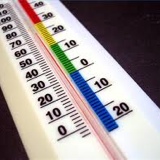Information
-
Triage Number
-
Assessment or Fire Name/#
-
Property Photo
-
Location
-
Street Address
-
City
-
Ownership
-
Property Type
-
Type
- School
- Hospital
- Sewer plant
- Water plant
- Power plant
- Fire Station
- Police Station
- Water pump station
- Communication Site.
- Power Substation
- Power Generation Site
- Gas Plant
- Other
-
Lot size (acres)
-
Date Assessed
-
Assessor
-
Engine Crew
-
Evacuated
-
How many on site?
Access
-
Driveway length less than 200 feet and/or too narrow for a brush truck?
-
Widen your driveway and if possible, create an adequate turnaround area for fire apparatus. Remove or thin vegetation adjacent to the driveway to create better access. Ensure chains, gates, or fences are wide enough for access and are open during an emergency
-
Is driveway clear of overheating vegetation?
-
Thin trees and remove brush along driveway to create better access. Remove branches that overhang the driveway and prune low hanging branches on larger trees to reduce the risk of fire spreading from the ground into the trees.
-
Is address marking present
-
Contact local Fire Department for recommendations
Home Assessment
Overview of Surroundings
-
Are there significant topography changes within 30 feet (9m) of the structure?
- Steep slopes (greater than 20%) within 30 feet of structure?
- Located on ridge, chimney, saddle, box canyon?
- No significant topography changes
- Not inspected
-
Due to the position of your structure on the landscape, you should take extra care to manage the vegetation within 100 to 200 feet (30 to 60m) of your property. Thin small trees and remove brush to break up the continuity of the vegetation and reduce the risk of high intensity fire approaching your home. Keep your lawn mowed and watered.
-
Is the neighbors property mitigated?
-
Due to the proximity of neighboring properties to your home, extra care should be taken to create defensible space and maintain ignition-resistant construction. In addition, consider talking with your neighbors about fuel reduction.
Roof
-
Roof Type
-
Make sure all roof edges have "bird stops" or mortar to prevent embers from entering the area between the tile and the roof deck.
-
The roof is the most vulnerable part of your structure during a wildfire. Replace wood shakes with Class A fire resistant roofing.
-
Condition (shingles flat with no gaps, all shingles present, bird stops present?)
-
Repair gaps, replace any missing shingles, and install bird stops if needed.
-
The roof and gutters are clear of all combustible materials?
-
Clear roof, gutters, valleys and crevices of all litter, needles and debris.
-
Are skylights present
-
Number of skylights
Eaves, Soffits and Vents
-
Are the gutters non combustible?
-
Consider replacing with non combustible material and installing gutter guards to keep debris out of gutter
-
Are the soffits in good condition with no openings?
-
Consider enclosing the soffits to reduce the amount of heat that can build under the eaves. Enclosed soffits also have vents that are parallel to the ground and are less likely to collect embers during a wildfire.
-
Vent condition?
-
Repair vents to reduce the risk of embers entering the eaves.
-
Do all vents and openings have 1/8” metal mesh coverings?
-
Screen all vents and openings with 1/8 inch or smaller metal mesh to reduce the probability of embers entering your structure.
Windows
-
Window type?
-
Consider replacing single pane windows with dual pane tempered glass.
-
Are walls combustible?
-
Consider replacing or if wood, the wood could be treated with a fire treatment.
-
Foundation exposed
-
All combustible materials such as ICF should be covered with non combustible material.
-
Nooks and crannies and other small spaces (gaps, holes, areas where embers could lodge or accumulate) are all clear of combustible material?
-
Keep all nooks and crannies free from litter, flammable decor, and/or nesting material.
-
Do all wall and/or gable vents have 1/8" metal mesh screening?
-
Cover vents with 1/8" metal mesh screening.
-
Do dryer vents have working louvred?
-
Install louver vents and make sure they operate properly and have a 1/8” wire mesh inside the louvers.
-
If there are bump outs or overhanging portions of the house. Are they free of combustible material?
-
Keep the area under the "bump-out" free from debris and vegetation. If the bottom of the bump-out is wood or other combustible material, consider replacing or covering with a non-combustible material such as cement board.
-
Is the ground to siding clearance 8 inches or greater?
-
Create at least 8 inches of clearance from the ground to flammable siding replacing with non-combustible alternatives. Remove any combustible mulch and clear vegetation from the 5 feet next to the home.
-
Is the first 18” out from the foundation clear of all combustible material ?
-
All combustible material and vegetation should be cleared up to 18” from the foundation. Consider installing a concrete sidewalk or dig down 2” and install landscape fabric with 2” of gravel.
Garage
-
Is the garage door free of gaps?
-
Weather seal the perimeter of the door and consider replacing damaged windows. Repair or replace doors that leave gaps or holes (these gaps can allow embers to enter the garage).
Decks and Attachments
-
Are there decks present?
-
With a wooden deck, it is extra important to make certain that the area under the deck is free from vegetation or other flammable items. Regularly clean out debris from between the deck board joints and other areas where debris has accumulated (example: under stairs). In the event of a wildfire, remove flammable items such as brooms, patio furniture (including cushions), and propane tanks from the deck. -
Are the decks non combustible
-
-
There is sometimes a misunderstanding regarding the combustibility of wood-plastic composite decking products (such as Trex). These products can also be combustible - so it is extremely important to maintain your deck(s) well. Keep the area under all decks free from debris and flammable materials and routinely clean the needles and debris from the deck board joints.
-
Deck condition?
-
Repair/replace rotted or damaged boards.
-
Has debris accumulated at the deck to wall junction and/or does this area lack flashing?
-
Remove debris and litter from this area. If the wall or deck is made of combustible materials, install metal flashing between this junction. Take care to install flashing correctly to prevent water damage.
-
Flammable material or vegetation under deck?
-
Remove flammable material (wood piles, gasoline, lawn mowers, etc) and vegetation from under the deck. Even composite decks can burn if there is flammable material stored underneath the deck.
-
Does the deck overhang a steep slope?
-
Consider enclosing (and properly ventilating) deck. Extend defensible space to 200 feet downhill from the deck. Remove flammable material or vegetation from this area. Consider building a noncombustible wall across the slope approximately 10-20 feet from the edge of the deck.
-
Combustible fence attached to structure?
-
Anything that attaches to your home can provide a pathway for fire to spread to the structure. Replace all wood or vinyl fencing with metal, or alternatively, replace at least the 5-foot section that attaches to the home. It is recommended to install a minimum of a 4’ wide gate where any combustible fence is connected to the house.
Other
-
Are there any other additional structure recommendations?
-
undefined
Defensible Space
0-5 feet (0-1.5m) from structure
-
Has bark mulch been used?
-
Remove mulch
-
Vegetation, brush or trees in this zone?
-
Install a hard surfaces adjacent to the structure and extending out at least 8 inches. Such as a concrete walkway or use non-combustible mulch (rock). Keep the lawn well irrigated and use low-growing herbaceous (non-woody) plants. Avoid plants that generate ground litter from bark, leaves, or seeds that slough off. Shrubs and trees are not recommended in this zone.
This zone is particularly important if you have wood or vinyl siding. Rock pathways can be used and there is no need to keep the edge of this zone a straight line. Curving or winding ignition-resistant pathways can be both pleasing to the eye and provide protection to your home. -
Are there landscape timbers, debris, or other combustible material present in this zone?
-
Remove this material or treat wood with fire rated finish. Be aware that the finish may need to be applied every 2-3 years.
5-30 feet (1.5 - 9m) from structure
-
Are detached accessory structures (sheds, temporary buildings, garages, play sets) located within 30 feet (9m) of the home?
-
Are there other combustible items located within 30 feet of the structure (scrap lumber, junk, cars, boats, RVs, etc.)?
-
Remove materials/items.
-
Wood pile stored closer than 30 feet (9m) to the home?
-
Relocate the wood pile to an area more than 30 feet (9m) from the home.
-
Do trees or branches touch or overhang the structure?
-
Prune branches so there is a minimum of 10 feet (3m) of separation between the vegetation and the roof.
-
Is there brush or other vegetation that could act as a "ladder" and allow fire to climb into larger trees or the structure itself?
-
All trees and shrubs in this zone should be well spaced and well maintained. Plant in groupings or "islands" of vegetation so that if wind-blown embers were to ignite the group, the heat would be insufficient to ignite the home or adjacent islands.
Remove dead plant material and tree branches. Remove brush and small trees that could act as a ladder to transmit fire into the tree tops or onto the structure itself. Remove most of the younger understory trees that are crowding the larger overstory trees. Remove brush and small trees from the dripline of the well-spaced larger trees. Prune live limbs (recommend pruning September to March if live limbs) and dead limbs up to 14 feet (4.3m) in height. HOWEVER, do not remove more than 30% of the live crown and make sure to retain 50% of the live crown on smaller trees (this may mean smaller trees are pruned to a height of less than 14 feet [4.3m] ). -
Do grasses and weeds need to be trimmed or maintained?
-
Keep grass in this zone watered and cut below 6 inches in height.
-
Are there piles of downed dead branches, dead logs, slash and/or heavy accumulations of pine needles?
-
All organic materials such as trees, branches and grass clippings should be removed to a compost.
30-100 feet (9-30m)from structure (and extending out 200 feet (60m) if on a slope/in a chimney/draw).
-
Do conditions require extending this zone beyond 100 feet?
Propane/HazMat and Water Sources
-
Propane or above ground fuel storage tanks?
-
Within 30 feet (9m) of structure?
-
Relocate tanks larger than 125 gallons (water capacity) at least 30 feet (9m) from the home. Create 10 feet (3m) of clear space around the tank.
-
Is agriculture equipment/ chemical present?
-
Remove materials form the structure and relocate to a less fire susceptible location (gravel, pad, secure building, ect.)
-
Sketch.
-
Describe.
Other Hazardous/agricultural chemicals
-
Are there other hazardous chemicals present?
-
Remove materials or store in a fire safe cabinet and/or relocate to a less fire susceptible location.
Water sources
-
Is there a fire hydrant present?
-
-
Other water sources on site?
- Creek
- Pond
- Pool
- External sprinklers
- None
-
Notes (access, flow, recharge)
Priorities
-
Priority 1:
-
Priority 2:
-
Priority 3:
-
Other notes: When performing mitigation efforts it is always good practice to begin at the structure and work your way out to the rest of your property.
-
Structure Triage info and safety rating
- SF-1 (Stand alone structure with safety zone present)
- SF-2 (Defensible structure with safety zone present)
- SF-3 (Defensible structure - unsafe for fire personnel - retreat and return)
- SF-4 (in-defensible -unsafe for fire personnel - rescue drive by)
-
Assessment completed














